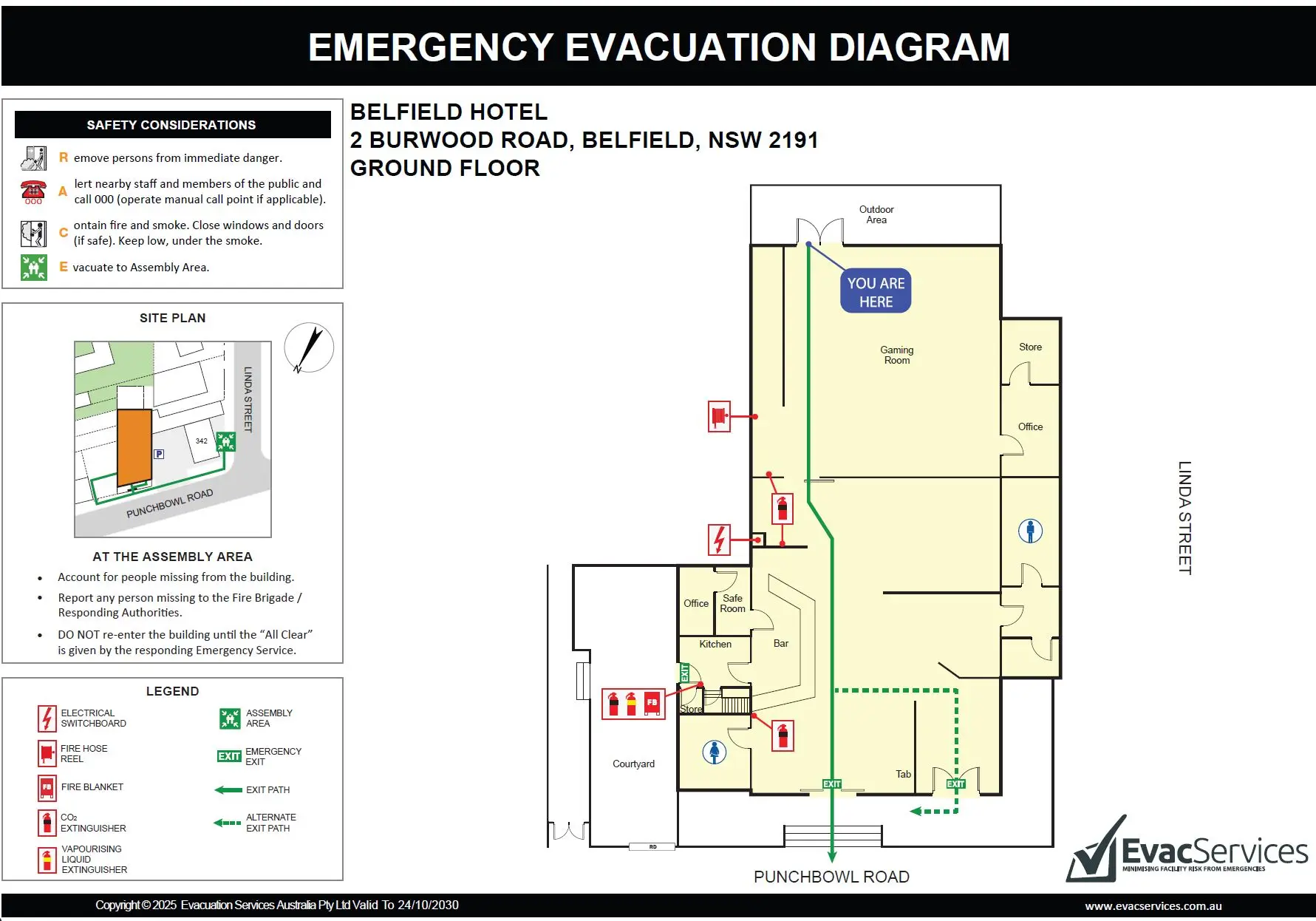Becoming 100 percent compliant to the Australian Standard 3745-2010 may be a bit of a challenge, but it would certainly mean the difference in making sure that your company is prepared for any event or disaster.
The specific requirements differ depending on the type of facility, and your role within the facility. It is important to remember, however, that both building management and tenants must meet their compliance obligations.
It might become confusing, but hopefully, these seven steps can help you figure out if you and your company are truly 100 percent compliant:
1. Emergency Planning Committee and Fire Safety Adviser
The first thing to do to make sure that your company is 100 percent compliant is to make sure that there is an Emergency Planning Committee (EPC) appointed, responsible for developing and maintaining the emergency plan, appoint an Emergency Control Organisation (ECO or Warden team) and make sure that everyone knows what their role is in the unlikely event of a disaster.
Additionally, in Queensland, the Building Fire Safety Regulation 2008 requires that a facility with 30 or more staff should have a Fire Safety Adviser who is nominated to advise the EPC and undertake safety assessments and training. The FSA would conduct a review of the site against national and state compliance requirements and communicate his or her findings with the EPC.
2. Written Emergency Procedures
The next thing to remember is that you have to make sure that your emergency plan is written and clear not only to the persons responsible for creating them but also for all the individuals involved in it. A written emergency plan should document all the systems, strategies and procedures involved in implementing a safe and organised environment should anything untoward happen in the building or tenancy. A thesis of what the plan is a disaster or an accident — the written emergency plan serves as the bible for everyone’s roles and their responsibilities before, during and after an emergency.
3. Evacuation Diagrams and Signs
It is highly unlikely that in the midst of an emergency, one would have the time to whip out a ledger of all the things that you need to do to get to a safe and organised place. This means that putting up signs and diagrams is of utmost importance, and according to Australian Standard 3745, it is a fundamental requirement of compliance to have emergency and evacuation information displayed on signs and diagrams, placed along the path of egress from the building.
AS3745:2010 documents the required elements for the diagrams. The ‘You are here’ signs and markers to the nearest exits are essential for this step, and designated assembly areas for evacuation outside the building should also be clear.
4. Emergency Control Organisation
Now that you have a committee, the plan, and procedures in place, it is vital that you choose who will enforce your emergency and evacuation plan. The Emergency Control Organisation – who hold titles such as ‘chief warden’, ‘floor warden’, etc. – are the people on the ground to make sure that your emergency plan is followed to a T and goes as smoothly as possible. They are also in charge of the post-emergency de-briefing.
It is important that you keep an up-to-date register of the ECO.
5. Training for 100 percent compliant
Of course, all that planning will just go to waste without the proper training. Not only does 100% compliance require the ECO members to attend training, but it is also required that all occupants of the building/tenancy have the knowledge and skills to step up to the plate in case of an emergency. This is not only limited to the use of a fire extinguisher, but also on the building’s evacuation procedures.
6. Annual Emergency Response Exercises
To test whether the emergency and evacuation plans work, it is important to drill them in annual emergency response exercises. These fire drills allow the facility to test their emergency response times and procedures, as well as the ECO actions and the occupants’ response to an emergency. Drills may be prefixed with a warning that they are only exercises.
7. Tenant and Occupant Requirements
All the preparation will be for nought if the tenants in your building or business do not meet their statutory requirements. To become 100 percent compliant, tenants and secondary occupants must also plan for emergencies by having written procedures of their emergency plan, have evacuation diagrams and signage, participate in the EPC and participate in training and emergency response exercises.
Did you manage to check all steps on the list? Give us a call at 1300 922 437, and we can help you work on fulfilling the gap to become 100 percent compliant.
You can read more about your specific requirements on our http://www.100percentcompliant.com.au website.
Or contact us by filling in the form below.





